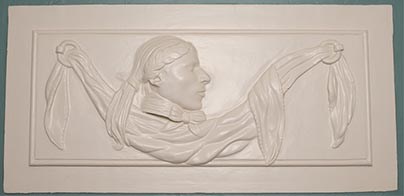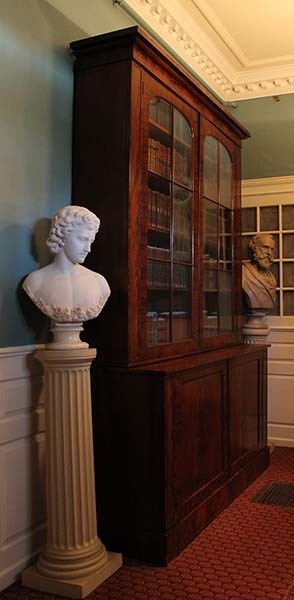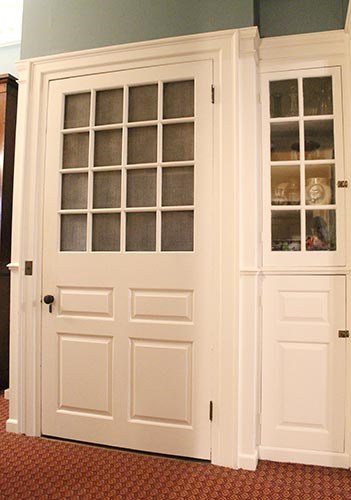

Left image
Right image

NPS Photo Castle CraigieAfter purchasing the house in 1791, Andrew Craigie made significant alterations, transforming the already grand house into an enormous mansion. The elegant hallway connected the new primary carriage entrance on the west side to the expanded library on the east side of the house. The hallway was decorated with paneling, dentil molding, and Federal-style plaster images, including a profile portrait of a man above the library door. 
NPS Photo Art and LiteratureThe Longfellows used the room as a long gallery in addition to a passageway, filling it with busts and artwork. Three large bookcases house literature in Spanish, Italian, and French - including the seventy-five volume set of Voltaire which Longfellow bought at the sale of his landlady's Elizabeth Craigie’s books in 1841. The Longfellows’ appreciation for European and Classical art is represented in a group of plaster casts on pedestals at the west end of the hallway, copies of marble sculptures in museum collections. The massive Jupiter of Otricoli - which Fanny Longfellow called "the grand Jove" - arrived in 1845, simulating the original in the Vatican Museum. Clytie is a painted plaster cast after the marble original in the British Museum. The bust of Venus of Medici is a painted plaster cast acquired by Alice Longfellow. The east end holds three busts of Henry Longfellow, as sculpted by Edward Brackett in 1844, Benjamin Paul Akers in 1851, and Samuel J. Kitson in 1879. Two Appleton family busts flank the library door: Fanny Longfellow's father Nathan Appleton by Richard James Wyatt in Rome, 1836, and her uncle Samuel Appleton by Benjamin Paul Akers in 1851. The last bust on this end of the hall, a marble bust of the angel Sandalphon by Florence Freeman, was a gift from Tom Appleton and a group of admirers of Henry Longfellow. 
NPS Photo Architectural AdaptationIn the mid-nineteenth century, Henry Longfellow divided the space into two rooms when he converted the west end door to a window. In the early twentieth century, the hallway was altered again to accommodate the installation of a hydraulic elevator. In her mid-fifties, Alice Longfellow suffered from arthritis and sometimes used a wheelchair. Though it was a significant architectural intrusion, the elevator allowed her to use both floors of the house. The space required for the elevator was sensitively designed by Alice's architect cousin, Alexander Wadsworth Longfellow, Jr., who incorporated a small china display cabinet into the space as well.
|
Last updated: February 2, 2022
